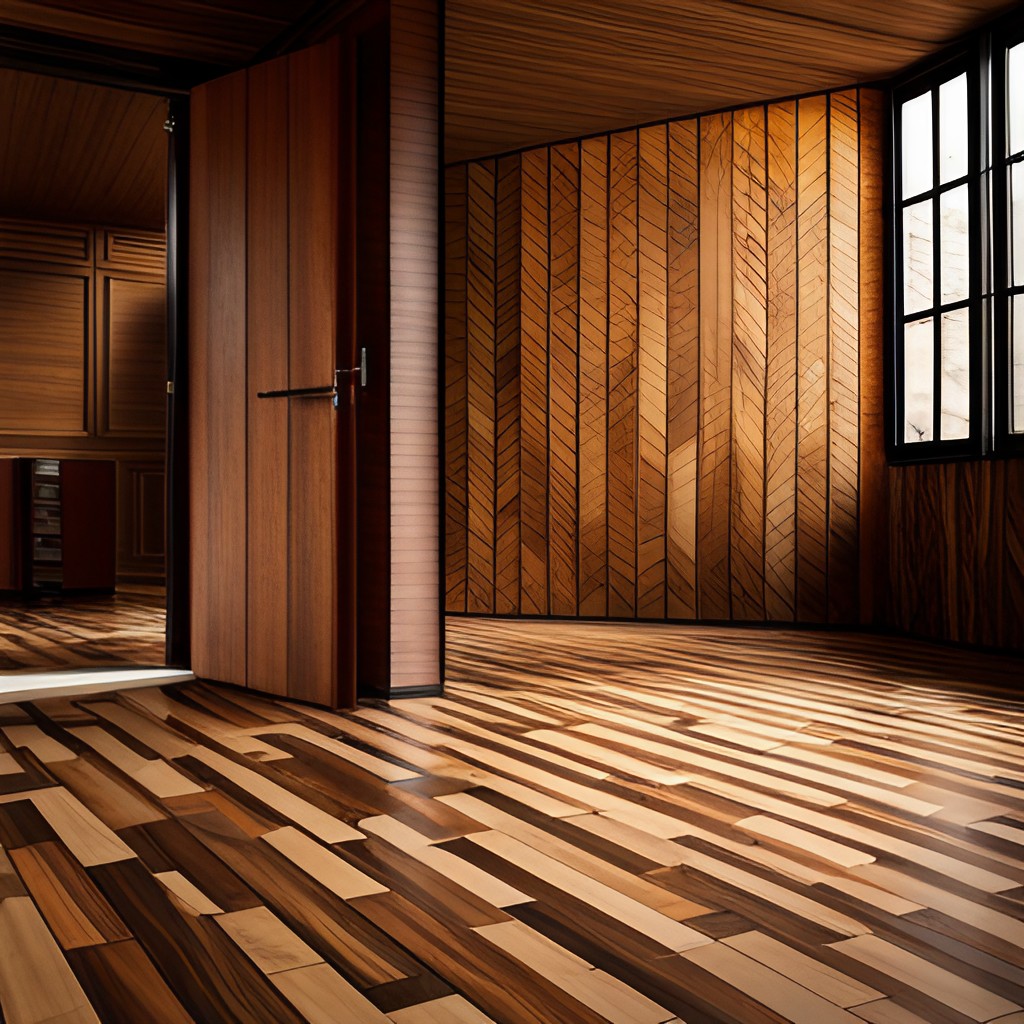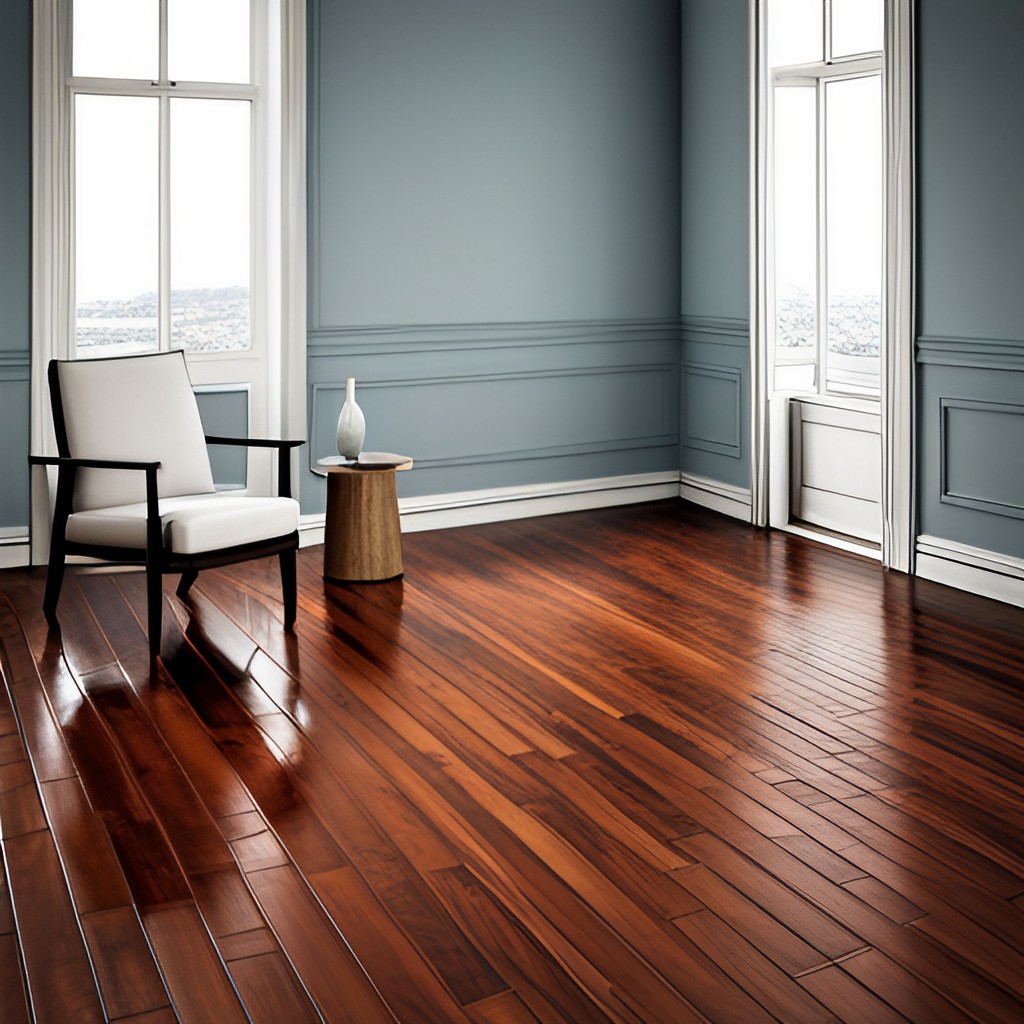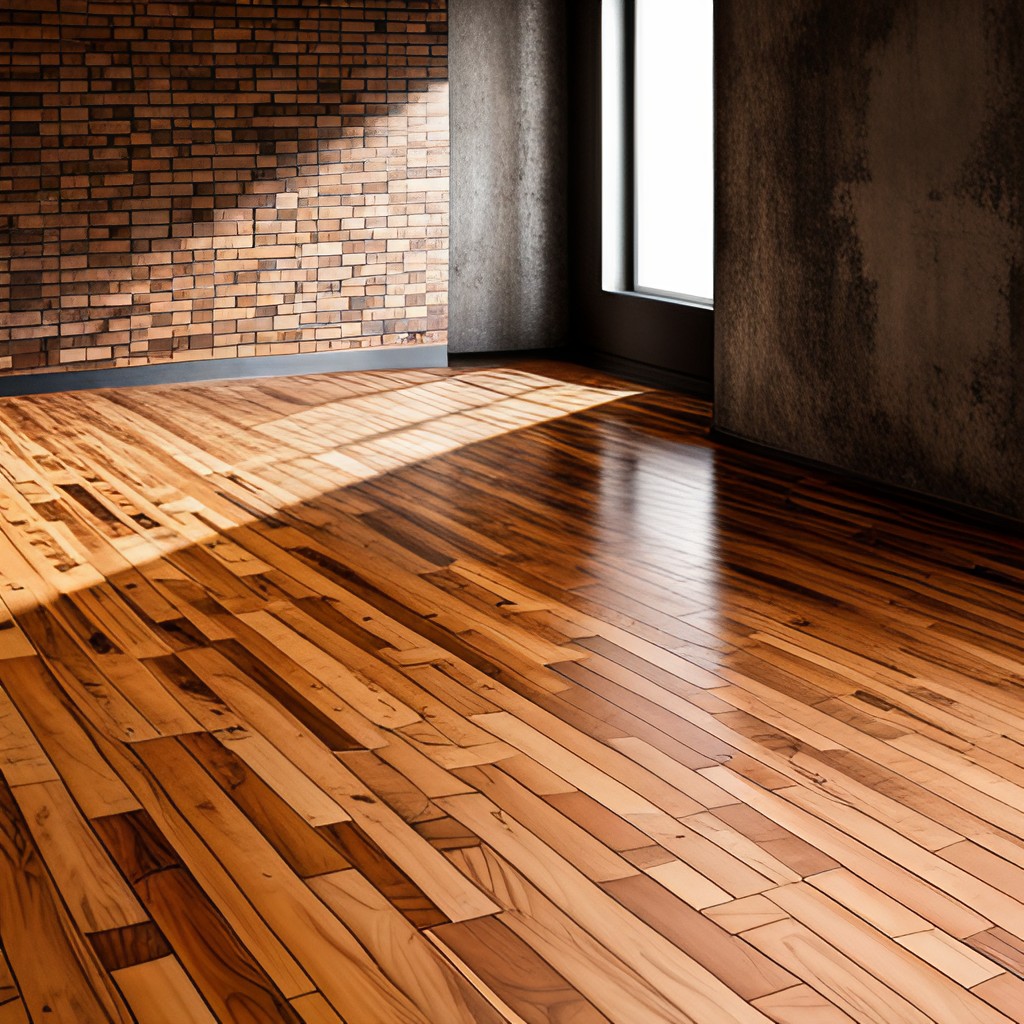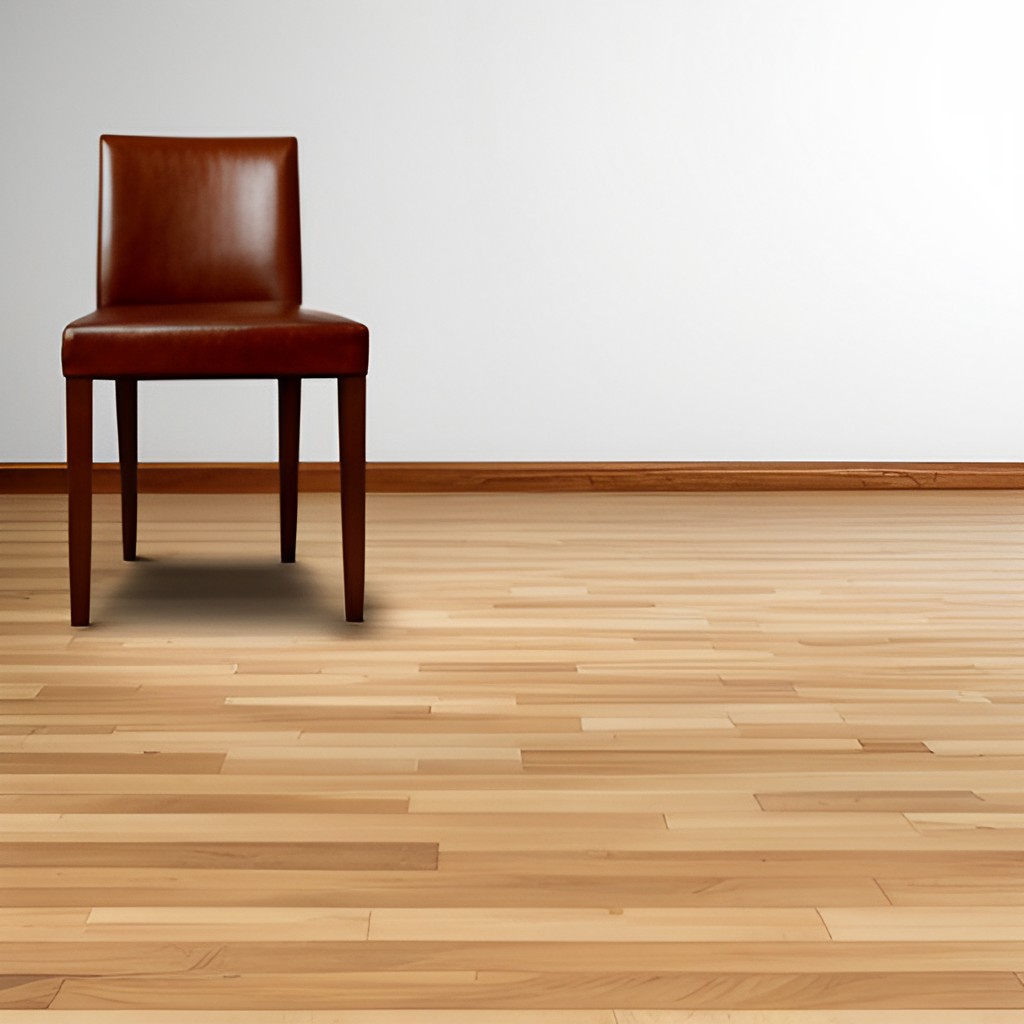Bamboo flooring is increasingly recognized not only for its aesthetic appeal but also for its remarkable durability. Crafted from the bamboo plant, a renewable resource known for its rapid growth and strength, bamboo flooring offers a sustainable and sturdy flooring option.
The durability of bamboo flooring can vary depending on the type, construction, and finishing processes used, but generally, it is as durable or more so than traditional hardwood floors.
Its resilience to wear and tear, coupled with its resistance to moisture and insects, makes bamboo flooring a practical choice for both residential and commercial spaces.
This introduction aims to explore the factors that contribute to the durability of bamboo flooring, offering insights into how it withstands daily challenges and maintains its beauty over time.
Types of Bamboo Flooring
Solid Bamboo (Strand-Woven)

Solid bamboo flooring, especially the strand-woven variety, stands out as the pinnacle of durability in the bamboo flooring spectrum. This type is crafted by compressing bamboo fibers under extreme pressure and heat, resulting in a product that substantially surpasses the hardness and durability of traditional hardwoods.
Strand-woven bamboo is not only renowned for its strength but also for its environmental sustainability. It effectively utilizes the entire bamboo stalk, minimizing waste and promoting eco-friendliness.
Suitable for high-traffic areas in both residential and commercial settings, solid strand-woven bamboo flooring offers an excellent balance of aesthetic versatility and long-lasting durability.
Its density makes it highly resistant to wear and impact, ensuring it retains its visual appeal for years to come.
Engineered Bamboo (Strand-Woven)

Engineered bamboo flooring represents a significant innovation in the realm of sustainable building materials. Unlike solid bamboo, which consists entirely of bamboo material, engineered bamboo combines a top layer of strand-woven bamboo with underlying layers of plywood or fiberboard.
This layered construction bestows engineered bamboo floors with enhanced stability and resistance to changes in humidity and temperature.
EBW (Engineered Bamboo Wood)

EBW, or Engineered Bamboo Wood, amalgamates the natural beauty of bamboo with the structural advantages of an engineered product.
The top wear layer of strand-woven bamboo provides the aesthetic and durability of traditional bamboo flooring, while the core layers ensure the floor remains stable across various environmental conditions.
Notably, EBW flooring can be more easily installed over different types of subfloors, including concrete and existing wood floors, thanks to its versatile fitting options which include floating (without adhesives) and gluing down.
This makes EBW a practical choice for both renovation projects and new constructions, aiming to achieve a balance between eco-friendliness, durability, and ease of installation.
SWB (Strand-Woven Bamboo)

Strand-woven bamboo (SWB) is created through a distinctive process that involves compressing strands of bamboo under intense pressure, resulting in a product that far exceeds the hardness of traditional bamboo floors.
This method not only produces a flooring material that is incredibly dense and robust, making it suitable for high-traffic areas but also contributes to its aesthetic depth.
The grain patterns in SWB are more varied and richer, offering a unique visual appeal that mimics the look of hardwood while maintaining the sustainable attributes bamboo is known for.
Furthermore, SWB flooring is considered a more environmentally friendly option compared to conventional hardwoods, as bamboo can regenerate much faster than most trees, making it a renewable resource.
The intrinsic strength and durability of strand-woven bamboo, coupled with its environmental benefits, render it an ideal choice for those seeking a sustainable yet stylish flooring solution.
Factors Affecting Bamboo Flooring Durability
Quality of Bamboo
The durability and overall quality of bamboo flooring significantly depend on the quality of the original bamboo material used in its production. Bamboo’s hardness and strength can vary widely depending on the species, age at harvest, and growing conditions.
The optimal harvesting time for bamboo aimed at flooring purposes is typically when it reaches maturity, around 5 to 6 years, which ensures maximum hardness. Furthermore, the conditions under which bamboo grows, including soil quality, climate, and elevation, can influence its structural integrity.
Manufacturers committed to producing high-grade bamboo flooring rigorously select mature bamboo from reputable sources and adhere to strict quality control processes throughout production. This dedication to sourcing and manufacturing standards ensures the bamboo flooring’s durability, appearance, and lifespan.
High-quality original bamboo, therefore, underpins the foundational excellence of bamboo flooring, making it a reliable and desirable choice for sustainable building projects.
Manufacturing Process

The manufacturing process of bamboo flooring plays a pivotal role in determining its final quality, durability, and environmental footprint. This process typically involves several key stages:
Harvesting:
Bamboo stems, or culms, are harvested by hand to preserve the root structure, allowing for sustainable regrowth. The optimal age for harvesting is between 5 to 6 years to ensure maximum hardness and strength.
Processing:
Once harvested, the bamboo is cut into strips, which are then treated to remove sugars and pests. This step is crucial for preventing future decay and insect infestation.
Carbonization (Optional):
Some bamboo flooring undergoes a carbonization process, where the strips are steamed under controlled pressure and temperature. This process darkens the bamboo to a richer color but can slightly reduce its hardness.
Pressing:
The treated strips are then dried and glued together under high pressure to form boards. The pressing method varies, with strand-woven bamboo being the most durable option, as it intertwines the strands for enhanced strength.
Milling:
The boards are milled into planks and fitted with interlocking edges for easy installation. This stage also includes finishing, where the planks are sanded and coated with a protective layer to enhance durability and resistance to moisture and wear.
Quality Control:
Throughout the manufacturing process, rigorous quality control measures are employed to ensure the bamboo flooring meets high standards of durability, appearance, and environmental sustainability.
Adhering to these manufacturing steps with meticulous attention to detail ensures that bamboo flooring is not only strong and durable but also an environmentally responsible choice for modern construction.
Finish Types
The final touch that significantly influences the durability, appearance, and maintenance of bamboo flooring is the finish applied. High-quality finishes offer protection against stains, scratches, and moisture, extending the life of the flooring.
There are mainly two types of finishes used on bamboo floors: surface finishes and penetrating oil finishes.
Surface finishes, like aluminum oxide, create a hard, protective layer atop the bamboo, providing excellent resistance to wear and tear.
This type of finish is ideal for high-traffic areas, as it preserves the natural beauty of the bamboo while offering robust protection.
Penetrating oil finishes, on the other hand, seep into the bamboo, enriching its natural look and feel. While offering less protection against scratches compared to surface finishes, oil finishes provide easier repair options.
Scratches or wear marks can be blended away with spot treatments, maintaining the floor’s aesthetic appeal over time.
Choosing the right finish depends on the specific needs and expected traffic of the installation environment. Surface finishes are recommended for commercial spaces or busy households, whereas penetrating oil finishes might be preferred in lower-traffic areas that prioritize the natural beauty of bamboo flooring.
Regular maintenance is crucial for both types of finishes to preserve the integrity and appearance of the floor.
Comparative Durability

Durability Compared to Hardwood
Bamboo flooring holds a notable position when compared to traditional hardwood floors in terms of durability. Principally, bamboo possesses a higher resistance to water damage, making it less prone to warping and swelling than many hardwood varieties.
This characteristic alone extends bamboo’s appeal to areas of the home susceptible to moisture exposure, such as kitchens and bathrooms, where hardwood floors might not be advisable.
Furthermore, the inherent strength of bamboo, particularly strand-woven types, often surpasses that of traditional hardwoods, offering enhanced durability under foot traffic.
This makes bamboo flooring a viable, long-lasting alternative in both residential and commercial settings where the flooring demands are rigorous.
However, bamboo is not without its vulnerabilities. It can be susceptible to scratches and dents, similar to hardwood floors, requiring the same level of care and maintenance to retain its aesthetic appeal over time.
The choice between bamboo and traditional hardwood ultimately depends on the specific needs of the environment, along with considerations for sustainability, cost, and the desired aesthetic effect.
Strand-Woven Bamboo Durability
Strand-woven bamboo represents the pinnacle of bamboo flooring durability due to its unique manufacturing process.
This process involves compressing strands of bamboo under intense pressure, alongside a resin that acts as a binder, resulting in a product that is substantially harder and more dense than traditional bamboo and even many hardwoods.
Its superior durability is highlighted by high Janka Hardness Scale ratings, often exceeding those of oak, maple, and sometimes even Brazilian cherry.
The densification process not only improves its resistance to physical impacts and wear but also enhances its stability in varying humidity conditions, reducing the risk of warping and deformation over time.
Consequently, strand-woven bamboo floors are highly recommended for high-traffic areas and commercial spaces that require a flooring solution capable of withstanding intense daily use without compromising on style or environmental sustainability.
Proper installation and maintenance further augment the lifespan of strand-woven bamboo flooring, making it a prudent investment for both contemporary and traditional interior designs.
Pros and Cons of Bamboo Flooring in Terms of Durability
Advantages of Bamboo Flooring
Hardness
One of the most significant advantages of bamboo flooring is its exceptional hardness. The manufacturing process, especially for strand-woven bamboo, endows the flooring with a density and hardness that surpasses many traditional hardwood options.
This intrinsic strength directly contributes to its ability to withstand the rigors of heavy foot traffic, making it an ideal choice for both residential and commercial settings.
Longevity
Bamboo flooring boasts impressive longevity. With proper care and maintenance, it can last as long as traditional hardwood floors. Its durability against wear and tear means it maintains its visual appeal and structural integrity over years of use.
This durability, coupled with its resistance to moisture and temperature fluctuations, particularly in strand-woven variations, ensures a long lifespan, offering a sound investment in flooring.
Eco-Friendliness
The eco-friendliness of bamboo flooring stands out amongst flooring options. Bamboo is a highly renewable resource, growing to maturity within five to seven years, significantly faster than hardwood trees, which can take decades.
The sustainability of bamboo flooring is further enhanced by more responsible farming practices and the use of environmentally friendly adhesives and finishes by many manufacturers.
Hence, choosing bamboo flooring reduces the ecological footprint and supports the sustainability goals of modern construction and design.
Disadvantages
Susceptibility to Moisture and Scratches
Despite its impressive durability and strength, bamboo flooring does have its vulnerabilities, particularly to moisture and scratches.
Prolonged exposure to water can cause bamboo planks to warp, swell, or become discolored, making it less ideal for areas prone to dampness or spills, such as bathrooms or kitchens.
Additionally, while strand-woven bamboo is remarkably hard, the surface of bamboo flooring can still be susceptible to scratches from pets’ nails, high heels, and dragged furniture.
It is advisable to employ protective measures, such as felt pads under furniture and regular trimming of pets’ nails, to mitigate these effects.
Variation in Quality
The market for bamboo flooring is vast and varied, leading to significant fluctuations in product quality. The difference often lies in the manufacturing process, particularly in the use of adhesives and materials.
Flooring products made with inferior adhesives can emit harmful VOCs (volatile organic compounds), posing health risks and diminishing indoor air quality.
Furthermore, some bamboo floors are constructed from immature plants, reducing the flooring’s overall hardness and durability.
Prospective buyers should seek reputable manufacturers and ensure the flooring meets strict environmental and health standards, such as certifications from relevant authorities.
Maintenance and Care to Enhance Durability
Routine Cleaning
To maintain the aesthetic appeal and longevity of bamboo flooring, it is crucial to implement a regular cleaning routine. Begin by sweeping or vacuuming the floor daily to remove dust, dirt, and grit that could scratch the surface.
For vacuuming, use a soft brush attachment to prevent accidental abrasions. Following the removal of surface debris, a weekly cleaning with a damp not wet mop or cloth can help maintain the floor’s shine and prevent build-up.
It is important to use a cleaner specifically designed for bamboo floors; harsh chemicals or excessive water can damage the flooring. After damp mopping, immediately dry the floor with a clean, dry cloth to eliminate any residual moisture.
Spot Cleaning
Accidental spills and stains are inevitable, but prompt action can prevent permanent damage. In the event of a spill, it is essential to clean the area immediately with a soft, damp cloth.
For stubborn stains, use a bamboo floor-approved cleaning solution applied directly to the cloth rather than the floor to avoid excessive moisture exposure. Always follow up with a dry cloth to remove any remaining dampness.
Related Topics:
Preventive Measures
To safeguard bamboo flooring against scratches and moisture damage, adopt a proactive preventive strategy. Firstly, place felt pads under furniture legs to minimize scratches and scuffs.
Avoid dragging furniture across the floor; instead, lift and move it with care. For high-traffic areas, consider using area rugs or runners to protect the floor’s surface but ensure they are breathable to prevent moisture entrapment.
In terms of moisture management, it’s crucial to address spills immediately to prevent water absorption and potential warping of the bamboo. Humidity levels within the home should be maintained between 40% and 60% to support the natural equilibrium of the bamboo material.
Installing high-quality moisture barriers under the bamboo flooring during installation can also provide an added layer of protection against moisture damage from below, especially in areas prone to dampness.
Regular inspections for signs of wear and tear can further preempt potential damage. By integrating these preventive measures into your routine, you’ll significantly extend the life and beauty of your bamboo flooring.
Case Studies and Real-world Applications
Bamboo Flooring in High-Traffic Areas

Bamboo flooring has been increasingly chosen for high-traffic areas due to its durability and aesthetic appeal. For instance, public libraries and commercial offices have reported high satisfaction levels with bamboo flooring installations.
These environments benefit from bamboo’s resilience to wear and its capacity to withstand constant foot traffic. The strategic placement of mats and regular maintenance routines play a pivotal role in preserving the flooring’s condition over time.
Additionally, restaurants with bamboo flooring have noted not only the material’s robustness but also its ease of cleaning and maintenance, contributing to a hygienic and inviting atmosphere for patrons.
Longevity Reports
The longevity of bamboo flooring is well-documented in both residential and commercial settings. Residential homes with bamboo floors have observed that, with proper care, the flooring can retain its beauty and integrity for decades.
Homeowners frequently cite the importance of adhering to preventive measures, like the use of felt pads and humidity control, as key factors in prolonging the life of their flooring. Commercial spaces, particularly retail environments, provide rigorous test scenarios for bamboo flooring.
Retail establishments report that bamboo floors can maintain their aesthetic appeal and structural integrity for many years, even under the demands of high foot traffic and frequent spill clean-ups, underscoring bamboo flooring’s suitability for a variety of applications.
Conclusion
Bamboo flooring emerges as an exceedingly durable and aesthetically pleasing choice for both residential and commercial settings. Its versatility, stemming from a range of options such as strand-woven, engineered, and horizontal or vertical configurations, allows for tailor-made solutions catering to diverse environmental conditions and aesthetic preferences.
The durability of bamboo flooring, significantly influenced by factors such as the quality of bamboo, manufacturing processes, and finish types, rivals and often surpasses traditional hardwood floors.
While being mindful of potential vulnerabilities like moisture sensitivity and susceptibility to scratches, employing regular maintenance and preventive measures can considerably prolong the life and beauty of bamboo floors.
Furthermore, bamboo’s rapid regrowth rates and sustainable harvesting practices underscore its position as an eco-friendly flooring option.
This blend of durability, aesthetic appeal, and environmental sustainability makes bamboo flooring a compelling choice for those seeking a long-lasting, attractive, and eco-conscious flooring solution.

2 thoughts on “Checklist For How Durable is Bamboo Flooring”